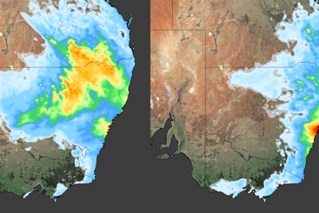Conflicting reports over wet La Nina for 2024 create confusion

Bureau of Meteorology
There are conflicting opinions on whether Australia will face a wet La Nina event this year.
Sky News and ABC meteorologists have run stories about how the weather system is likely to develop and drench the country in 2024.
But the Bureau of Meteorology and independent meteorologists say that it is too early to tell.
A BoM spokesperson said at this stage “it is soon to forecast a La Nina event”.
“Historically, La Nina has developed around 40 to 50 per cent of the time after an El Nino. La Nina tends to begin closer to autumn,” the spokesperson said.
“Around half of the years since 1900 have been either La Nina or El Nino. La Nina occurs on average every three to seven years.”
La Nina and El Nino events occur when the Pacific Ocean and the atmosphere above it change from their normal states for a sustained time, with the former associated with warming and the latter periods of sustained cooling.
Shayne McGregor, associate professor of climate at Monash University, said it was difficult to predict a La Nina event developing before May.
“There is an increased chance of it occurring, but I still don’t think it is odds on at this point in time to be the actual outcome,” he said.
“You generally don’t have confidence in forecasts that are operating through March-April-May, which they typically refer to as the spring predictability barrier.”

Both Queensland and New South Wales have experienced heavy rain and wild weather over the past few months. Photo: AAP
Historical precedent
Australia experienced a rare, three-year La Nina event from 2020 to 2023, but warnings of a hot summer have given way to torrential rain.
Dr Andrea Taschetto, associate professor at the University of NSW’s Climate Change Research Centre, said she believed it was extremely early to be forecasting a La Nina for later in the year.
“Clearly, the seven international models do not forecast a La Nina in June,” she said.
“We are still in an El Nino, but it is weakening.”
She said while historically a La Nina may develop from a strong El Nino weather pattern, it was still too early to tell if that will be the case.
“It works in balance. When one happens, the other often comes back,” she said.
“We, however, cannot say for sure.”
2023 was the hottest year on record and the weather bureau has predicted a drier-than-normal first three months of 2024, but McGregor said making predictions during this period was difficult.
“Quite often when an El Nino event ends, it turns into a La Nina event,” he said.
“But the range of natural variability is so large, it’s almost impossible to say yes, we’re seeing it at his point in time.”
Waiting game
Both McGregor and Taschetto agreed that it was difficult to predict with certainty which weather patterns would develop until later in the year.
“it is hard to predict during autumn. It tends to develop in winter, strengthen in autumn and weaken by the end of summer,” Taschetto said.
“If a La Nina happens, it will be at the end of the year.”
If there is a La Nina event, they normally bring increased rainfall across Australia, cooler daytime temperatures and a higher risk of tropical cyclones.
McGregor said currently, based on climate modelling, it was more likely than normal to occur, but remained unlikely in his opinion.
“Roughly four of the last 10 have each reached the one-year threshold after an El Nino event,” he said.
“I’m not saying it’s going to be that, but it’s typically only after an El Nino event ends.”








